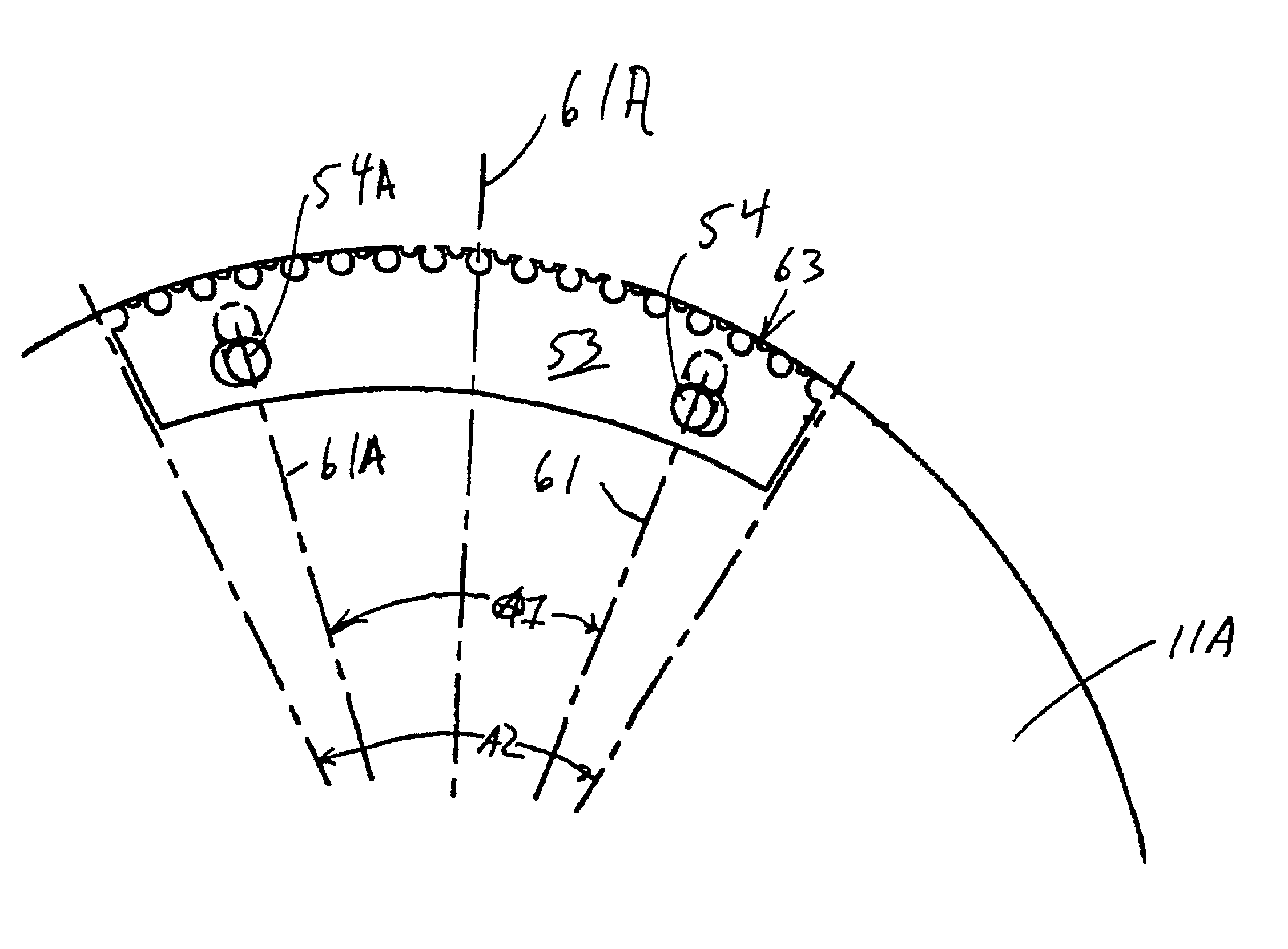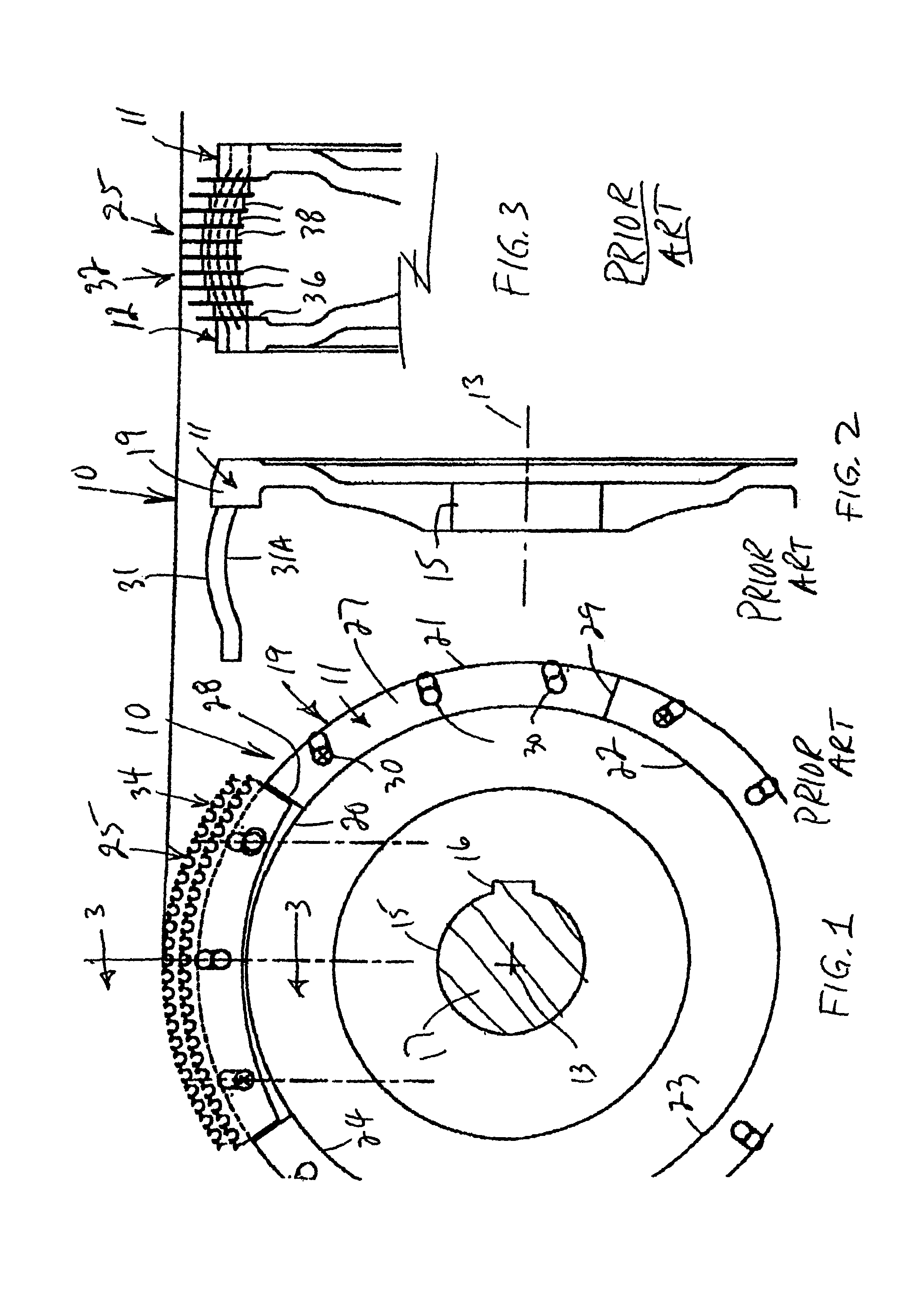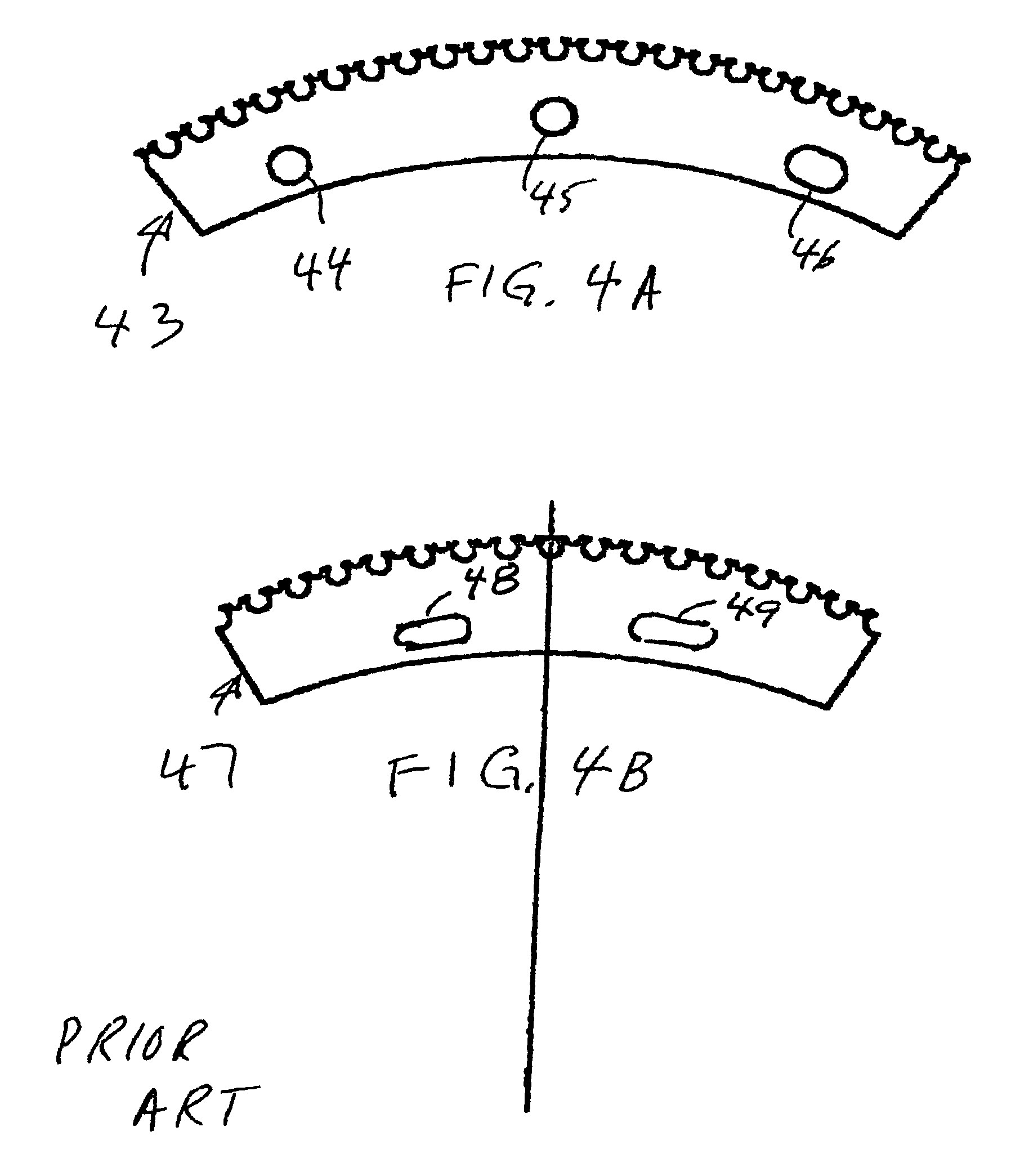Rasp hub for tire retreading machine
a tire retreading machine and hub technology, which is applied in the field of tire retreading machines, can solve the problems of the precise positioning of the inner edges of the mounting apertures of the blade, and achieve the effect of enhancing the cutting radius and improving the concentricity
- Summary
- Abstract
- Description
- Claims
- Application Information
AI Technical Summary
Benefits of technology
Problems solved by technology
Method used
Image
Examples
Embodiment Construction
[0032]Reference numeral 10 generally designates a hub for use in retreading tires. The hub 10 includes first and second end plates 11, 12 (FIG. 3), sometimes referred to as mounting plates. The mounting plates 11, 12 are sometimes referred to, by convention, as the pinside and top side mounting plates. This convention derives from the fact that typically a retreading hub is mounted for rotation about a vertical axis, whereas, in FIGS. 1 and 3, the axis of the hub (indicated by the chain line 13 in FIG. 2) is horizontal. The pins are pressed into the pinside mounting plate and slidably received in the topside mounting plate to facilitate blade replacement.
[0033]The hub plate 11 includes a circumferential flange 19 which is divided into a series of sections extending circumferentially about the periphery of the hub, each corresponding to a stack or section of blades. In the illustrated embodiment of FIGS. 1-3, there are five such peripheral segments, designated respectively 20, 21, 22...
PUM
| Property | Measurement | Unit |
|---|---|---|
| included angle | aaaaa | aaaaa |
| cut angle | aaaaa | aaaaa |
| cut angles | aaaaa | aaaaa |
Abstract
Description
Claims
Application Information
 Login to View More
Login to View More - R&D
- Intellectual Property
- Life Sciences
- Materials
- Tech Scout
- Unparalleled Data Quality
- Higher Quality Content
- 60% Fewer Hallucinations
Browse by: Latest US Patents, China's latest patents, Technical Efficacy Thesaurus, Application Domain, Technology Topic, Popular Technical Reports.
© 2025 PatSnap. All rights reserved.Legal|Privacy policy|Modern Slavery Act Transparency Statement|Sitemap|About US| Contact US: help@patsnap.com



